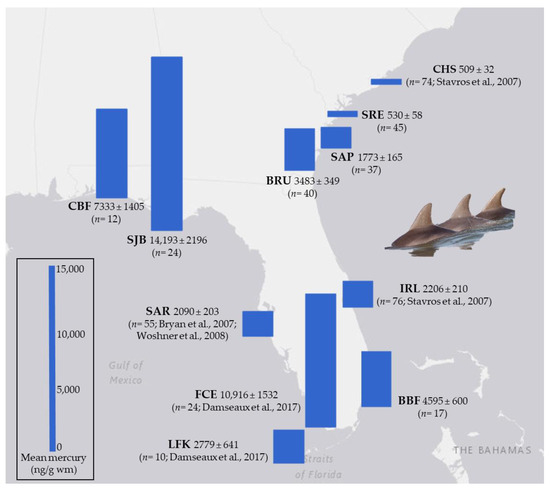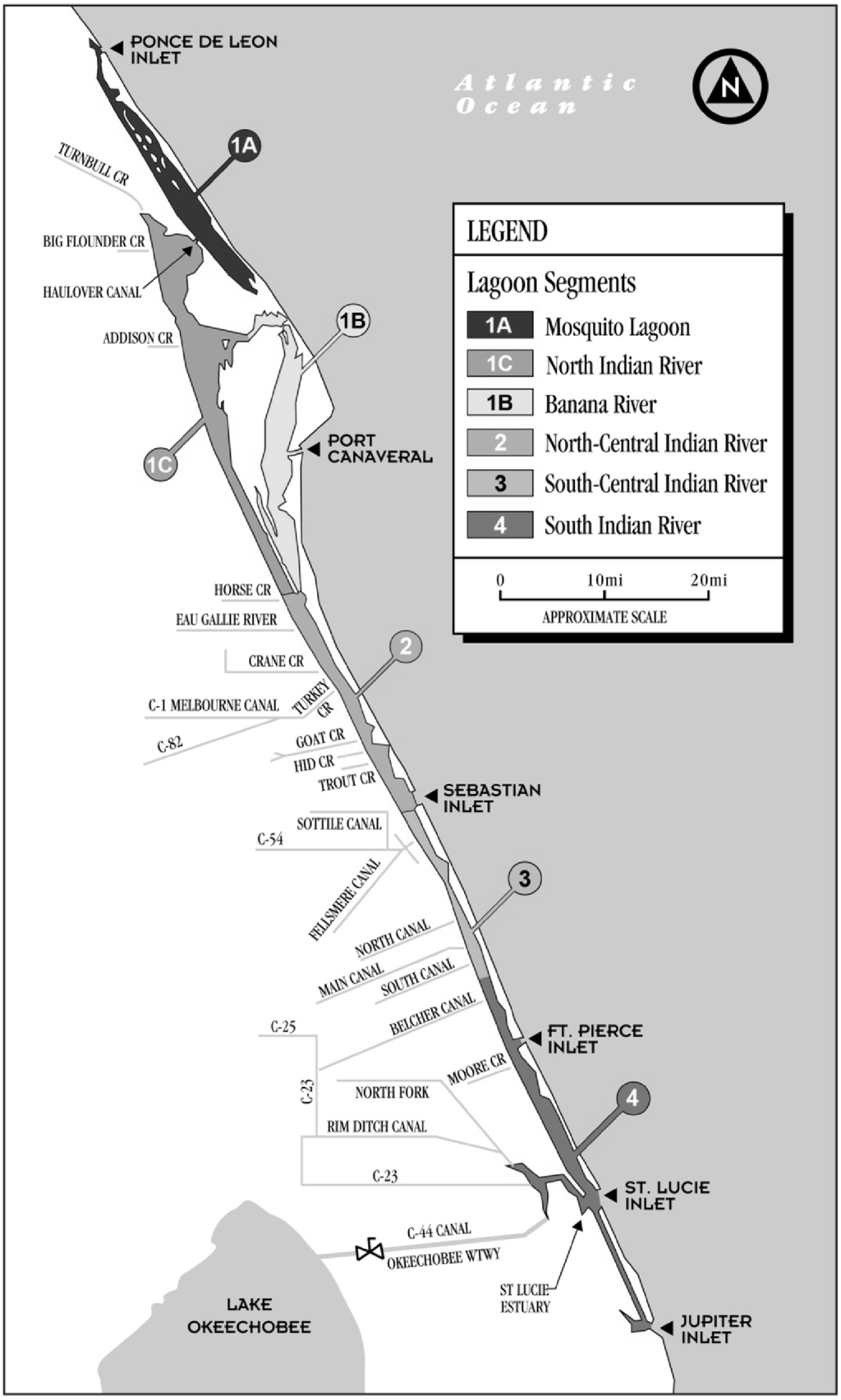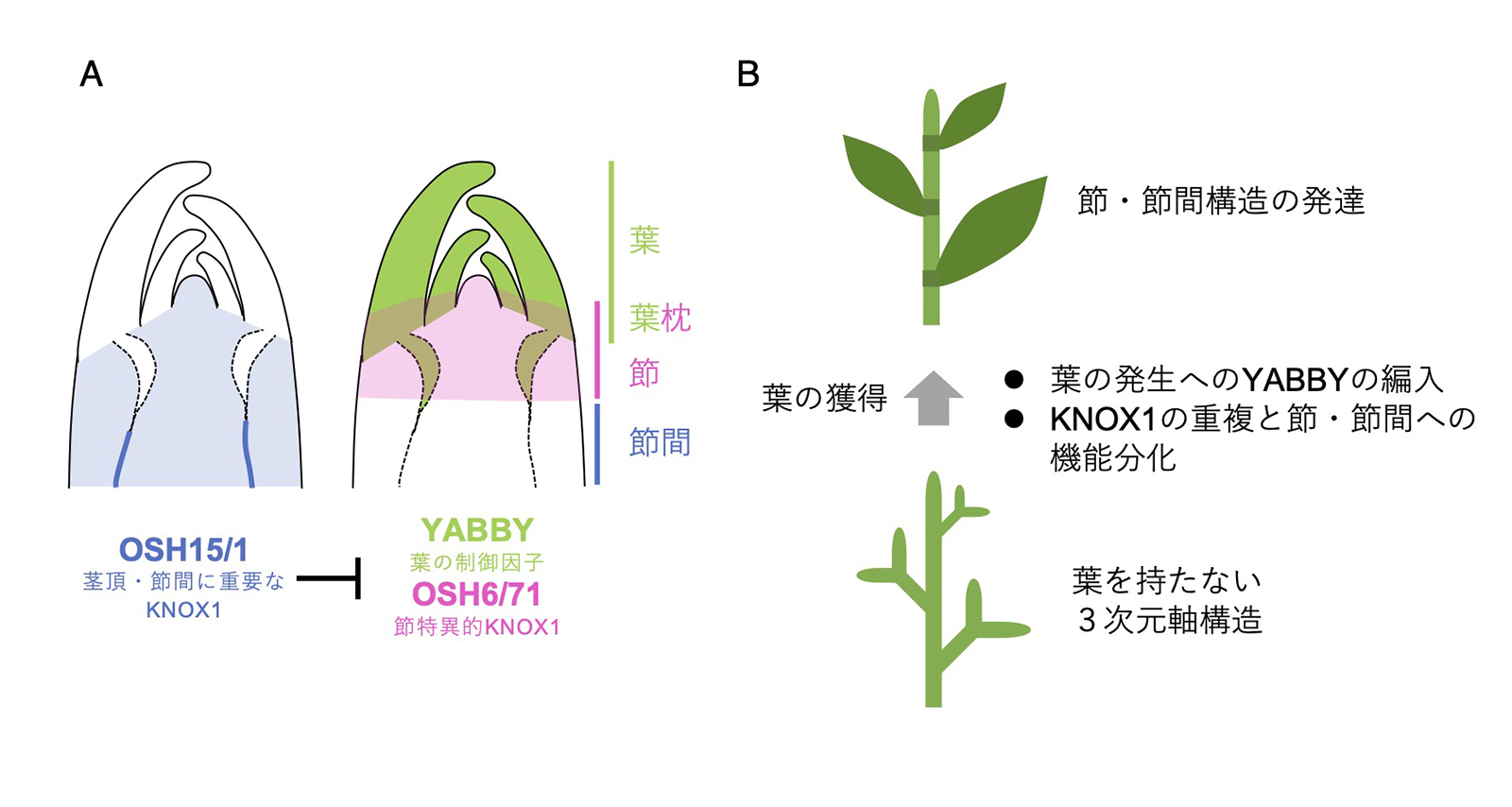2024-06-12 米国国立標準技術研究所(NIST)
<関連情報>
- https://www.nist.gov/news-events/news/2024/06/research-finds-dolphins-elevated-mercury-levels-florida-and-georgia
- https://www.mdpi.com/2305-6304/12/5/327
- https://www.mdpi.com/1660-4601/11/7/6709
米国南東部のバンドウイルカ(Tursiops spp.)における水銀蓄積の空間的変動 Spatial Variation in Mercury Accumulation in Bottlenose Dolphins (Tursiops spp.) in Southeastern U.S.A.
Mackenzie L. Griffin,Colleen E. Bryan,Tara M. Cox,Brian C. Balmer,Russell D. Day,Laura Garcia Barcia,Antoinette M. Gorgone,Jeremy J. Kiszka,Jenny A. Litz,Robin M. Perrtree,Teri K. Rowles,Lori H. Schwacke,Randall S. Wells and Eric Zolman
Toxics Published: 30 April 2024
DOI:https://doi.org/10.3390/toxics12050327

Abstract
Bottlenose dolphins (Tursiops spp.) inhabit bays, sounds, and estuaries (BSEs) throughout the southeast region of the U.S.A. and are sentinel species for human and ecosystem-level health. Dolphins are vulnerable to the bioaccumulation of contaminants through the coastal food chain because they are high-level predators. Currently, there is limited information on the spatial dynamics of mercury accumulation in these dolphins. Total mercury (THg) was measured in dolphin skin from multiple populations across the U.S. Southeast Atlantic and Gulf of Mexico coasts, and the influence of geographic origin, sex, and age class was investigated. Mercury varied significantly among sampling sites and was greatest in dolphins in St. Joseph Bay, Florida Everglades, and Choctawhatchee Bay (14,193 ng/g ± 2196 ng/g, 10,916 ng/g ± 1532 ng/g, and 7333 ng/g ± 1405 ng/g wet mass (wm), respectively) and lowest in dolphins in Charleston and Skidaway River Estuary (509 ng/g ± 32.1 ng/g and 530 ng/g ± 58.4 ng/g wm, respectively). Spatial mercury patterns were consistent regardless of sex or age class. Bottlenose dolphin mercury exposure can effectively represent regional trends and reflect large-scale atmospheric mercury input and local biogeochemical processes. As a sentinel species, the bottlenose dolphin data presented here can direct future studies to evaluate mercury exposure to human residents in St. Joseph Bay, Choctawhatchee Bay, and Florida Coastal Everglades, as well as additional sites with similar geographical, oceanographic, or anthropogenic parameters. These data may also inform state and federal authorities that establish fish consumption advisories to determine if residents in these locales are at heightened risk for mercury toxicity.
フロリダ州住民の毛髪水銀濃度と魚の摂取パターン Hair Mercury Concentrations and Fish Consumption Patterns in Florida Residents
Adam M. Schaefer,Emily L. Jensen,Gregory D. Bossart andJohn S. Reif
International Journal of Environmental Research and Public Health Published: 26 June 2014
DOI:https://doi.org/10.3390/ijerph110706709

Abstract
Mercury exposure through the consumption of fish and shellfish represents a significant public health concern in the United States. Recent research has demonstrated higher seafood consumption and subsequent increased risk of methylmercury exposure among subpopulations living in coastal areas. The identification of high concentrations of total mercury in blood and skin among resident Atlantic bottlenose dolphins (Tursiops truncatus) in the Indian River Lagoon (IRL), a coastal estuary in Florida, alerted us to a potential public health hazard in the contiguous human population. Therefore, we analyzed hair mercury concentrations of residents living along the IRL and ascertained their sources and patterns of seafood consumption. The total mean mercury concentration for 135 residents was 1.53 ± 1.89 µg/g. The concentration of hair mercury among males (2.02 ± 2.38 µg/g) was significantly higher than that for females (0.96 ± 0.74 µg/g) (p < 0.01). Log transformed hair mercury concentration was significantly associated with the frequency of total seafood consumption (p < 0.01). Individuals who reported consuming seafood once a day or more were 3.71 (95% CI 0.84–16.38) times more likely to have a total hair mercury concentration over 1.0 µg/g, which corresponds approximately to the U.S. EPA reference dose, compared to those who consumed seafood once a week or less. Hair mercury concentration was also significantly higher among individuals who obtained all or most of their seafood from local recreational sources (p < 0.01). The elevated human mercury concentrations mirror the elevated concentrations observed in resident dolphins in the same geographical region. The current study is one of the first to apply the concept of a sentinel animal to a contiguous human population.


